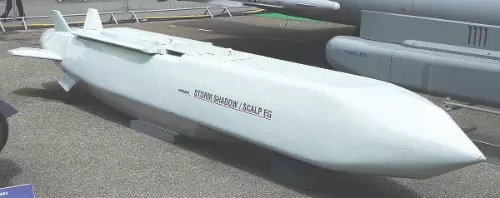Scalp, HAMMER: India’s arsenal deployed for precision strike

New Delhi: In a significant military action dubbed Operation Sindoor, India utilised sophisticated weapons systems delivered by its Rafale fighter jets, according to defence sources.
The operation featured Scalp cruise missiles and HAMMER precision-guided munitions as the primary armaments. These weapons were selected to target specific terrorist infrastructure while minimising civilian casualties, reflecting a calculated strategic approach.
The deployment of Rafale jets represents a substantial upgrade from India’s 2019 Balakot airstrike, which relied on older Mirage 2000 aircraft.
Scalp or Storm Shadow
The Scalp missile, also known as Storm Shadow, provides long-range deep strike capability with built-in stealth features. Manufactured by European consortium MBDA, it operates effectively in all weather conditions, day or night. With a 550 km range and advanced navigation combining INS (Inertial Navigation System), GPS, and terrain referencing, the missile delivers exceptional accuracy.
Particularly effective against hardened targets like bunkers and ammunition depots, the Scalp carries a substantial 450 kg warhead. Its low-flying trajectory makes detection challenging, while its infrared seeker matches pre-loaded target imagery to ensure precision strikes with minimal collateral effects. Ukraine previously employed this same missile system for strikes into Russian territory.
HAMMER
The HAMMER (Highly Agile Modular Munition Extended Range) complements the Scalp in Operation Sindoor. This French-made precision weapon functions as a glide bomb with a 70 km range and compatibility with various standard bomb weights (250kg, 500kg, 1,000kg).
The HAMMER’s modular design allows integration with multiple guidance systems—GPS, infrared imaging, or laser targeting—making it versatile against diverse targets from fortified positions to mobile assets. Produced by Safran, it resists jamming attempts, can launch from low altitudes over difficult terrain, and penetrates hardened structures effectively.
Loitering Munitions
The operation reportedly also involved Loitering Munitions, sometimes called “Kamikaze Drones.” These hybrid weapons combine drone surveillance capabilities with missile strike power, hovering over areas until targets appear before precisely engaging them. This technology allows for highly selective targeting while keeping military personnel at safe distances, which is particularly valuable against mobile or time-sensitive objectives.with agency inputs



